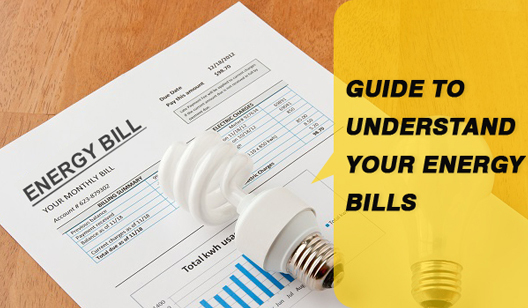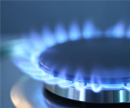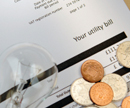Guide to Understand your Energy Bills
As a customer, if you are paying for any type of products or services, you be aware of the details given in the bill. More often than not, customers do not focus on the billing details. In case of internet bills or mobile bills, we are not sure how much we use. When we get a bill, suddenly we get a shock. This happens especially when our plan charges differ based on the usage. In case of unlimited plans, neither the customer nor the company is bothered because we pay a fixed bill. It becomes extremely important to know our usage and the billing details so that we can cut down cost involved in that. When it comes to electricity bill, when you know the usage pattern, you can really cut down on the energy bills. Here under we have discussed about how to read the bills and Compare Energy Supplier and move to cheaper tariffs or plans
Guide to understand your Energy bills –
Tariff name - It is usually found in first or second page of the bills. There are a lot of tariffs available in the market that sounds similar. There would be change in the tariff version or end month and year of the tariff. While doing a comparison, it is important that you give the exact name of the tariff. Only then the result table will show the accurate comparison result.
Meter readings - It consists of two sections. One contains most recent reading and one before that. Readings are named as E, A and C. E shows estimated reading, A shows actual reading taken by someone coming to your house. C is the reading submitted by customers. More often, customers would read the meter and submit to the suppliers.

MPAN / MPRN Numbers - These are unique supply points. MPAN is for Electricity and MPRN is for Gas. MPAN is a 21 digit number used to identify property. These numbers are used by energy companies to give you rates.
Contract Details - It includes an overall summary of contract, e.g. end date of current tariff, cancellation fee etc. If you are planning to switch energy supplier, then it’s necessary to ensure that you are not charged any cancellation fee by the current supplier. If the new supplier is cheaper by a large margin where despite the cancellation, you may go for switching. If the current tariff has already come to an end, the supplier either puts you automatically in a standard tariff or moves you to a different tariff that may be costlier. This you will know only when you Compare Gas and Electricity Prices with all the available suppliers in your area.
Unit rates, standing charges and Tariff Comparison Rate (TCR) -
Usage of energy is measured in kilowatt hours (kwh). It is also important for you to know what is your usage in kwh and if there is any standing charges for your tariff. In order to compare gas and electricity prices you may not necessarily know these things because the energy comparison sites will take care of these things. The savings shown by the comparison site will use all these for the calculation purpose. Even when you are switching energy supplier during the contract period, the calculator will calculate for the entire contract period and give you the savings. You may get Tariff Comparison Rate on your bill, introduced by Ofgem in order to make the comparison process easier for customers. TCR is the single figure regarding unit rates, standing charges and any other discounts applied on your current plan.
"Are you paying too much on energy bills? Compare energy bills with all suppliers in your area and switch to a cheaper supplier with Vswitch Usave."
Latest Articles
-
 What Types of Energy Tariffs Best Suits You?
What Types of Energy Tariffs Best Suits You?
-
 Christmas is Coming! What's New and Exiting Thing You can do this Year?
Christmas is Coming! What's New and Exiting Thing You can do this Year?
-
 Why Is Saving Energy Important For The Environment
Why Is Saving Energy Important For The Environment
-
 Eligibility Criteria For Getting Energy Bill Help In This Winter
Eligibility Criteria For Getting Energy Bill Help In This Winter
-
 GB's Energy Collapsed! What Should I do?
GB's Energy Collapsed! What Should I do?
-
 Who Supplies Gas and Electricity? Find in Just 2 Minutes
Who Supplies Gas and Electricity? Find in Just 2 Minutes
 Energy Efficient Light Bulbs Vs Regular Light Bulbs
Energy Efficient Light Bulbs Vs Regular Light Bulbs
-
 SSE - Big Six energy has Frozen Standard Energy Prices until April 2017
SSE - Big Six energy has Frozen Standard Energy Prices until April 2017
-
 Can You Swap Gas Supplier If You Have Arrears
Can You Swap Gas Supplier If You Have Arrears
-
 66% Customers Are on Expensive Standard Tariffs
66% Customers Are on Expensive Standard Tariffs
-
 Guide to Understand your Energy Bills
Guide to Understand your Energy Bills

